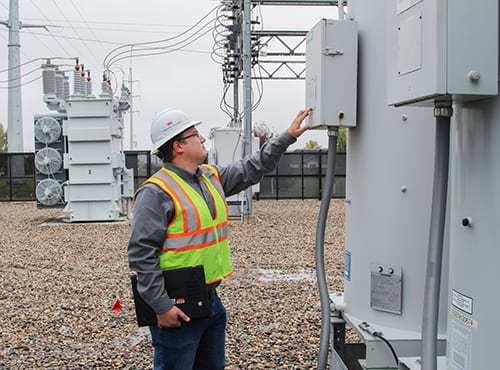

A substation inspection checklist is a tool used by electrical engineers to ensure that all equipment in a substation is functioning properly. The checklist includes items such as checking for loose bolts and connections, inspecting circuit breakers and transformers, and testing safety devices. By using this checklist, engineers can make sure that the substation is operating safely and efficiently.
Regular inspection and maintenance of substations is crucial to ensuring the safe and reliable operation of the electricity grid. A well-functioning substation will help to ensure that power flows smoothly through the grid, while a poorly maintained one can lead to disruptions in service. A substation inspection checklist should include a visual check of all equipment, as well as testing of key components such as circuit breakers and transformers.
Additionally, all electrical connections should be checked for tightness and corrosion. Any loose or damaged equipment should be repaired or replaced as necessary. By following a regular inspection and maintenance schedule, substations can be kept in good working condition and help to ensure the reliability of the electricity grid.

A substation inspection is an inspection of a substation to ensure that it is safe and functioning properly. The inspection includes checking the equipment, the electrical wiring, and the safety devices.
There are many things that are important in a substation, but if we had to choose one thing that is most important, it would be safety. A substation is a high voltage area and there is always the potential for accidents. That is why safety is the number one priority in a substation.
Substations are an important part of the electrical grid, and testing them is crucial to keeping the power flowing. There are a few different ways to test a substation, each with its own advantages and disadvantages. The most common way to test a substation is called a field test.
This involves sending out a team of engineers to the substation itself and hooking up various pieces of equipment to test the voltage, current, and other parameters. The advantage of this method is that it can be done relatively quickly and without disrupting service. However, it is also expensive and can be dangerous if not done properly.
Another way to test a substation is through remote monitoring. This involves installing sensors at the substation that send data back to a central location where it can be analyzed. This method is less invasive than field testing, but it requires more infrastructure in place beforehand.
Additionally, remote monitoring may not be able to catch all problems since it can only measure what the sensors are able to detect. Ultimately, how often and how thoroughly a substation should be tested depends on many factors including its age, location, size, and importance in the grid. Substations that are more critical or have experienced recent changes may need more frequent testing while those that are older or stable can be tested less frequently.
No matter how often they are tested though, ensuring that substations are running smoothly is essential for keeping the power on!
A substation is an electricity supply point where the voltage of an electrical grid is transformed to a value that can be used by consumers. The three primary roles of a substation are to provide power, regulate voltage, and protect equipment. Substations play a vital role in the operation of an electrical grid.
They provide power to consumers by transforming the voltage of an electrical grid to a value that can be used safely and efficiently. Additionally, substations regulate voltage levels within the grid to ensure that equipment is not overloaded and damaged. Finally, substations protect equipment from damage caused by faults or surges in the system.
If you’re responsible for maintaining a substation, it’s important to have a regular inspection checklist to ensure everything is in working order. This blog post outlines what should be included on your substation inspection checklist, including visual checks, equipment tests, and more. By following this checklist and keeping your substation in good condition, you can avoid problems and keep the power flowing smoothly.